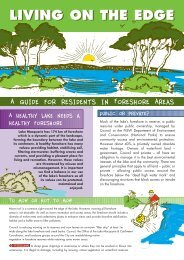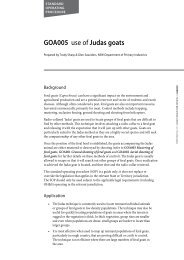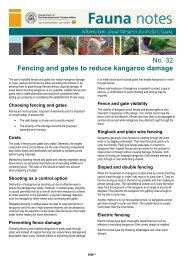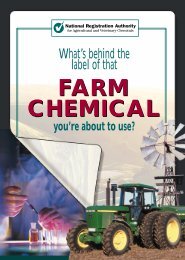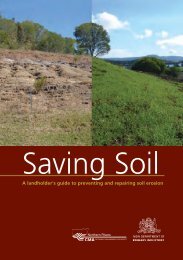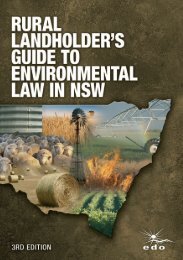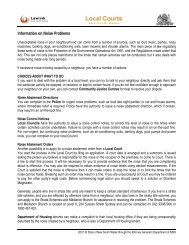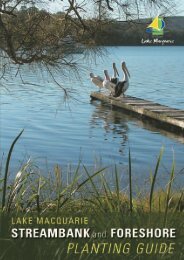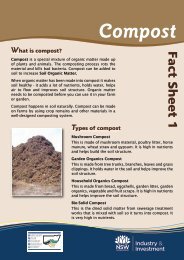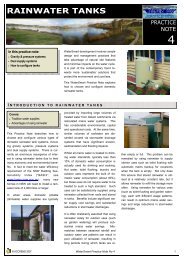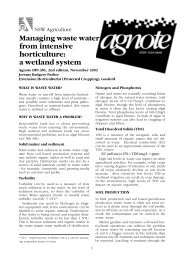Agricultural Fire Management Guidelines - Guide to Rural ...
Agricultural Fire Management Guidelines - Guide to Rural ...
Agricultural Fire Management Guidelines - Guide to Rural ...
Create successful ePaper yourself
Turn your PDF publications into a flip-book with our unique Google optimized e-Paper software.
Section 3 Advice11. Fuel breaksFuel breaks may help increase the effectiveness offi refi ghting and be used <strong>to</strong> protect key assets from fi re (seeFuel breaks, pages 17 <strong>to</strong> 19).a. Creating fuel breaksPermits may be required from local councils if nativevegetation is removed.Contact the relevant municipal fi re prevention offi cer aboutroadside fi re management and municipal fi re preventionplanning issues.Any work on roadsides apart from mowing needs the writtenconsent of the relevant coordinating road authority (localcouncil or VicRoads).Contact the Department of Sustainability and Environmentfi re management offi cer about fi re management in forestsand parks.b. Perimeter breaksWhere practical and environmentally responsible, landownersand managers are encouraged <strong>to</strong> have a natural orconstructed perimeter (boundary) fuel break betweenneighbouring properties including neighbouring public landsuch as roadsides.Landowners and managers are encouraged <strong>to</strong> have perimeterbreaks that reflect fire risk fac<strong>to</strong>rs such as aspect, slope, localweather conditions and fuel loads on adjoining land (see <strong>Fire</strong>behaviour, pages 5 <strong>to</strong> 9). Consider whether these breaks canbe used as access tracks as well as fuel breaks.With agreement between neighbours or a relevant publicauthority, perimeter fuel breaks could be located all or in par<strong>to</strong>n a neighbouring property.c. Internal breaksConsider the use of internal fuel breaks <strong>to</strong> minimise thetravel of fi re across the property. Consider whether thesebreaks can incorporate an access track.Consider having internal fuel breaks between differententerprises, such as farm forestry and cropping.d. Existing featuresWhere available, consider using existing features such aswater bodies or green crops, as fuel breaks.e. Fuel reduction in fenced-off areasLandowners and managers are encouraged <strong>to</strong> manageweeds in fenced-off areas <strong>to</strong> minimise fuel loads, particularlyif they are near key assets. Options include strategicgrazing, slashing and herbicide use.46 On the Land: <strong>Agricultural</strong> <strong>Fire</strong> <strong>Management</strong> <strong><strong>Guide</strong>lines</strong>




